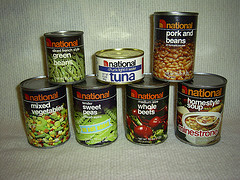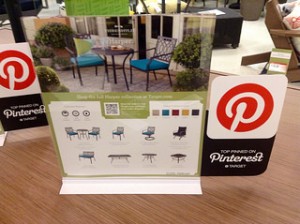 In December 2009, I wrote a post here on the Corporate Eye blog called Economic Considerations, Value and Store Brands Will Dominate Purchase Trends in 2010. Then in April 2010, I followed up with another post called 9 out of 10 Consumers Agree – Store Brands and National Brands Are Equal. Guess what? It’s time to talk about store brands again!
In December 2009, I wrote a post here on the Corporate Eye blog called Economic Considerations, Value and Store Brands Will Dominate Purchase Trends in 2010. Then in April 2010, I followed up with another post called 9 out of 10 Consumers Agree – Store Brands and National Brands Are Equal. Guess what? It’s time to talk about store brands again!
New research from Nielsen reveals that the U.S. recession of 2008-2009 drove huge growth for store brands as budget-conscious consumers from diverse demographics began to replace national brand purchases with store brand equivalents. It turns out, once consumers tried many of these store brands, they realized that the store brands are just as good (or very close) to the pricey national brands they’d been buying. According to Nielsen, U.S. store brand sales reached 22.3% market share in 2008 (nearly 2 share points higher than the previous year) and 23% in 2009.
Since then store brand sales have remained fairly flat. Turns out national brands took notice and ramped up their own marketing efforts to compete against the less expensive alternatives. However, a change in consumer perception definitely took place in the latter years of the first decade of the 21st century. No longer are store brands perceived as low quality and cheap knock-offs of national brand products. Today, store brands are a viable alternative in many categories.
The trick for store brands is convincing consumers to try them to see how comparable they really are to pricey national brands. Once consumers sample them and realize the quality is comparable, the trick is to convince them that they can trust that quality. They can expect the store brand to deliver the same quality every time the consumer purchases it. That’s a big hurdle for store brands to get over. If consumers can’t trust that a brand will meet their expectations for it every time, they’ll turn away from that brand in search of one that does consistently meet their expectations for it — even if that alternative is a more expensive national brand.
Nielsen offers a variety of strategy recommendations to grow store brands (follow the preceding link to read the complete list of suggestions). For example, invest in quality, keep prices affordable, and broaden the demographic appeal. In short, store brands shouldn’t be the brand consumers are embarrassed to buy. Changes in store brand perceptions and expectations have to be made in order for the masses to start buying them.
What do you think about the future of store brands? Leave a comment and share your thoughts.
Image: Flickr
Lucy is Editor at Corporate Eye


